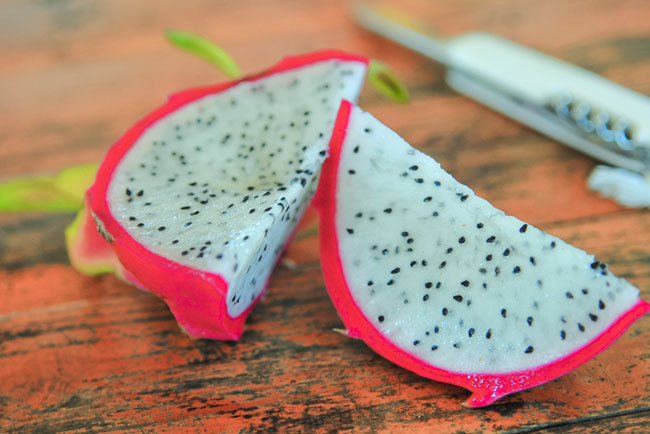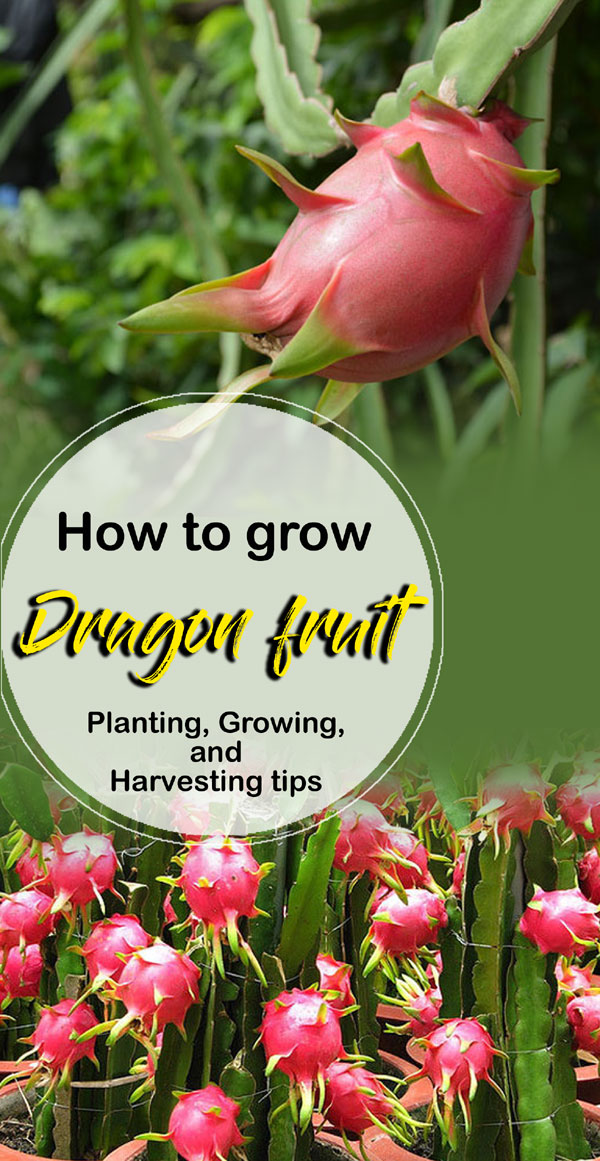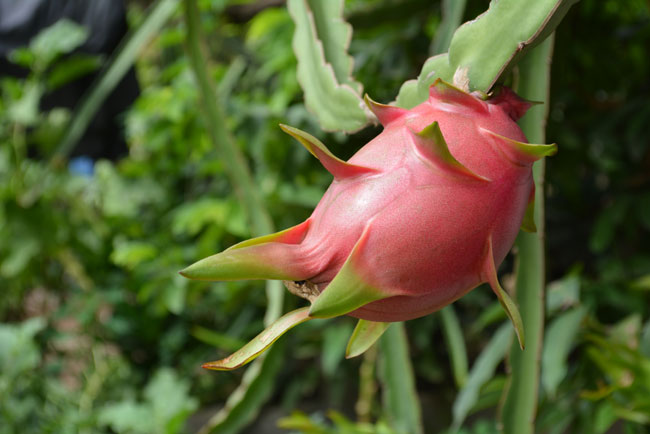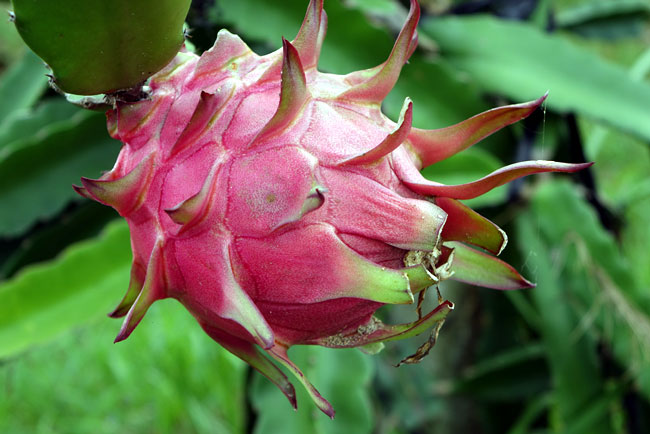Dragon fruit (Pitaya fruit)
Know how to grow Dragon fruit (Pitaya fruit), the Health benefits of Dragon fruit, Growing dragon fruit in containers, Pollination dragon fruit, and Dragon fruit Problems in this article. Pitaya fruit is a cactus that is actually quite favorable for its environment. Growing dragon fruit is a foreign, tropical fruit that you can grow in your container and garden very easily.
This plant is very famous in Asia and is widely grown throughout the region, it is quite popular in Thailand, Vietnam, Israel, and Shrilanka. In fact, it native to Mexico and South America. In India, it is also produced as commercial farming. Its fruits are used in food and plant is used as an ornamental plant.
Classification Pitaya fruit
Scientific name Hylocereus undatus
Common name Dragon fruit, Pitaya
Plant type Fruit
Sun requires Full Sun
Fruit season July to November
Flower colors Dark pink
Soil Sandy, Well-drained soil
Soil pH 5.5-7
Zone 9-11
How to grow Dragon fruit
The dragon is a climbing plant diversified with other cacti, requiring increased support. This tropical plant needs a lot of heat and humidity to grow. Read more.
Soil
Most cactus-type plants can be grown easily in any soil. For this, choose soil in which pH is 5-5 to 7 and is slightly acidic. Sandy soil is the best choice for this plant, you can prepare the good well-drained soil by adding sand to the garden soil.
Sun requirement
This plant requires full sun to bloom properly. Although they can tolerate little shade, more shades make a difference in the quality of the fruit.
Fertilizer
During the growing season of dragon fruit, when the plant is active, give it some fertilizer. Stop feeding it in winter and cold months. Fertilization can be done from time to time for the plant to grow well.
Watering
This plant is a cactus, so it requires water properly, but while giving water it is important to ensure that you are only giving water to the plant when the top of the soil you feel drought. Although soil needs moisture, Do not store water near the plant and protect the soil from becoming soggier.
Temperature
For the dragon fruit to grow well, temperature above 40 degrees F. It will not develop in cold weather. For proper development, the temperature should be between 65-80 degrees F.
Growing Dragon fruit in a containers
- For this, choose a large pot 10 inches in depth and at least 24 inches in width.
- It would be a climbing cactus that requires support.
- Prepare the soil of other cactus plants, which have sand, so that the water can well-drained. Before planting, check the container well, if there are no holes in the surface, then you should hole. So that the root of the plant is not damaged.
- After planting the Dragon Fruit Plant in the Container, place it in a sunny place. Because they require at least 6-7 hours of direct sun, although it tolerates some shade, it need a very warm atmosphere.
- Overwatering can kill your plant. So, when the soil of the container is dried, you should irrigation. Read more.
Propagation of Dragon fruit
Dragon fruit can be easily propagated to the seeds or cutting. To grow from seed, place some fruit flash on the paper towels and take it in warm conditions, where there is no direct sunlight. The seeds sprout in about 2 to 3 weeks, you can plant it in the container. Develop it in a separate pot and feed the eco-seaweed with water, it promotes strong planting. However, it takes years to reach the size of the fruit.
It is easy to develop even by cutting. Take a 1 to 1.5 feet long stem from the healthy plant and leave it in a shady dry place. It seals the ending of cutting and avoids rotting. Now plant it in a pot and place it in a shiny, shady place. so that roots can be developed. Do not over-wash during this time. Cutting can be propagated at any time, but there are better results in warmer environments.
Pollination Dragon fruit
You can bring self-fertile plants from the nursery, which requires cross-pollination from other Dragon Fruit Flowers. If you want to make sure that your plant is self-fertile or not, then you should test it, when its first flower comes from pollination. Pollination hand is a simple process, but keep in mind that its flowers live for up to 12 hours. All flowers have male and female parts. To pollinate by hand, you can use a small paintbrush. Rubbish the anther submit the pollen and make the flower bloom!
Harvesting
The pitaya fruit does not ripen after harvesting, therefore, before consuming the fruit, make sure that it is fully ripe. Dragon fruit skin matures from bright green to red or pink when ripe. It takes about 30 to 50 days to get results.
Dragon fruit Problems
Although the dragon is hard to see by seeing the fruit, still there are some problems. Caterpillars, snails, and slugs, insects trouble it. If you see caterpillars in the plant, you can remove them with your hands. Its young plants are weak because snails and slugs are chewed to its large Sections, and interfere with the initial training of main strains. There are several methods to control this, you can read in our article. Read.
It also bothers some common diseases – such as fungal problems. Due to high humidity and overwater on the plant, the fungal disease can develop on stems, flowers, and fruit. Cut off the part of the highly affected plant section. Keep the plant away from the crowd, this will give better air circulation. Stop overhead water and keep the plants healthy by using the eco-seaweed weekly.

Health benefits of Dragon fruit (Pitaya)
This exotic fruit is known as “Dragon Fruit“ or “Pitaya,” this is a beautiful-looking fruit its color varies from red, yellow, and pink with dragon-like scales on the outer surface of it. Inside it has a beautiful white colored pulp which is sweet with small black seeds. Dragon fruit grows on cacti native to America known as Hylocereus which is a night-blooming plant. Health benefits.
Read also: Growing Rambutan in your garden. Lotus plants growing at your home. How to grow Hibiscus. How to cucumber in your vegetable garden. Papaya Health benefits. Organic Bottle gourd growing guide. How to grow Potatoes in containers. Ridge gourd growing at home. Coriander Growing and care in containers. Clove plants growing and caring tips. Cantaloupe growing in containers. Health benefits of papaya. Plumeria growing and caring guide. Mulberry tree growing at home. Kiwi fruit Growing in containers.
Thank you and happy gardening.
For pin:







